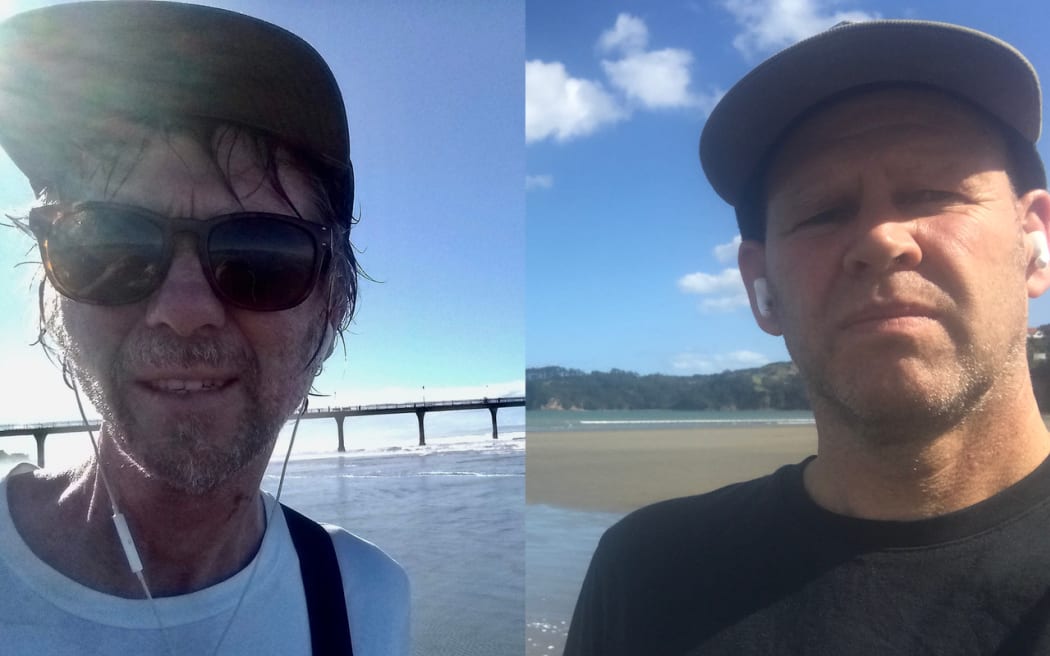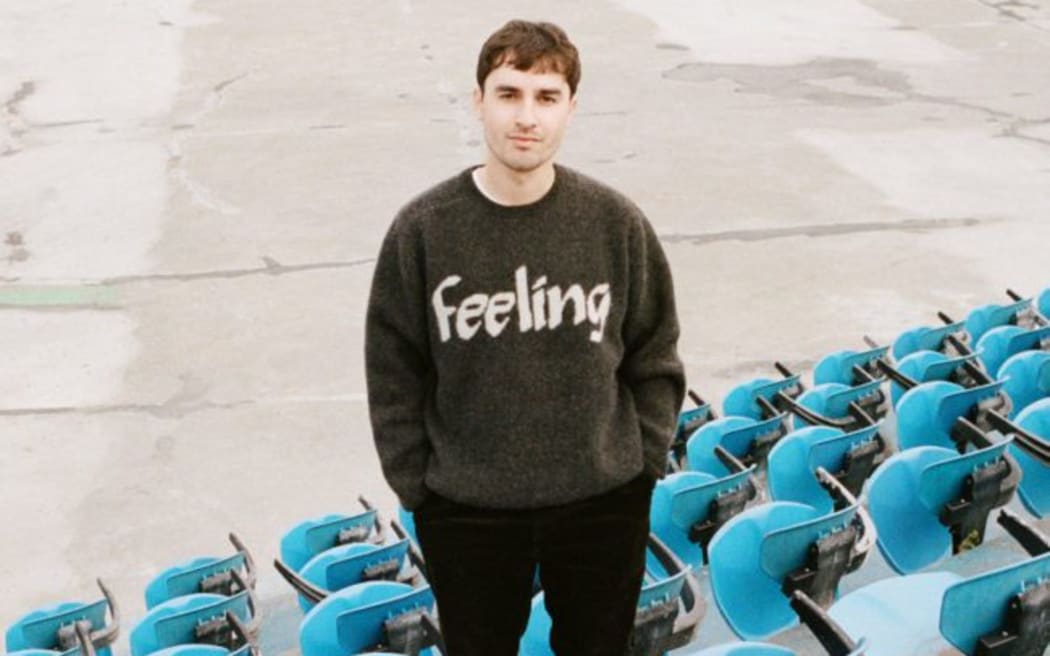Tony Stamp reviews albums by Damon Albarn's virtual cartoon band Gorillaz, local guitar pop maximalists Running Club, and rumpled electronica from Khotin.
Cracker Island by Gorillaz

Photo: Supplied
In 2000, Damon Albarn spoke to NME magazine about Tomorrow Comes Today, the debut EP by a new group called Gorillaz. The project was shrouded in secrecy, but it was known that lauded hip hop musician Dan the Automator had produced it, and prompted, Albarn said: “Dan is a mate of mine and he’s made this record in Jamaica, and I’ve just helped out a bit. But it’s not me. It’s a lot of people and Dan’s the producer of it. It wouldn’t be fair to say it was my thing.”
The singer was going through a period of reclusivity, having shunned the spotlight for a few years, during a prolonged period distancing himself from the Britpop sound, popularised by the band that propelled him to stardom, Blur.
So maybe it was false modesty to credit someone else for the new band’s work - he did after all have a hand in writing every song on their self-titled debut - or maybe he was waiting to see what the response was like.
As it turns out it was rapturous, and his new gig arguably eclipsed the old one. The next 20 years saw eight albums released under the Gorillaz handle, and while they’re all heavy with famous guest spots, there’s no mistaking that this is Damon Albarn’s thing.
Just after they released 13 in 1999, Blur gave an interview with Details Magazine, expressing frustration that, two years after OK Computer, Radiohead were hailed as geniuses while they were “dismissed as lightweights”.
Blur’s music would gain acclaim over the years, but there’s no denying the whiff of novelty that hung over their mid-90s output. And while Albarn would go on to create scores for theatre and film, and collaborate with musicians from Mali, the project where he dove head first into novelty - creating a virtual cartoon band with artist Jamie Hewlitt - is the one that brought him the most success.
In the early days of Gorillaz, Albarn seemed to be energised by anonymity, hiding behind a cartoon avatar called 2-D, and embracing collaboration. Most albums feature a mix of music royalty with fresher talent, but this eighth album Cracker Island tends towards established names, and features Albarn solo for just under half.
The album’s title track features the trademark falsetto of Thundercat, who also supplies bass. Elsewhere Latin star Bad Bunny makes an appearance, as does Stevie Nicks. Gorillaz albums used to be laden with features from rappers, and would impress with how well they worked (particularly for a British band). But here there’s just one, a repeat appearance from The Pharcyde’s Bootie Brown, after guesting on 2005’s ‘Dirty Harry’.
Tame Impala’s Kevin Parker sings on the same track ‘New Gold’ - he also provided bass, drums, guitar, synth, and wurlitzer - but Cracker Island is defined by a slick sort of production that winds up almost overpowering its guests' contributions.
Gorillaz have worked with producers Dan the Automator, Danger Mouse, and The Twilite Tone, as well as Remi Kabaka Jr., who provides the voice of Russell, the virtual band’s drummer. For this album Albarn enlisted nine-time Grammy winner Greg Kurstin, known for his work with Adele, Sia, Pink, and Lily Allen.
He brings a modern, faux-disco approach that threatens to squish everything into a sort of digital stasis. It’s not disastrous, but it is slightly concerning to hear the familiar buzz of pitch correction on Albarn’s voice - even more prominent on Stevie Nicks’.
Still, Kurstin also co-wrote each song, and many of them are very good, including the ones Albarn helms solo. On tracks like ‘Skinny Ape’ the sheen of production butts up again his increasingly scuffed voice.
That song features Albarn’s avatar 2-D singing about being an ape, and it’s worth remembering that while his real-life concerns bleed into the lyrics, they are from the perspective of a cartoon. I suspect the now-54-year-old likes the freedom in that, and Cracker Island contains an overarching story of sorts, concerned with forming a cult, and commenting on modern-day echo chambers. There’s also an ongoing narrative in the music videos if you care to delve that deeply.
When Gorillaz used to perform live, the actual people played behind screens projecting their cartoon counterparts, but by the time they made it to New Zealand in 2010, that had gone. Instead we got to see Albarn on stage, getting choked up several times - it was the last stop on the tour, and he said, their last show ever - and joined by Bobby Womack, De La Soul, Little Dragon, Paul Simonon and Mick Jones from The Clash, UK MCs Bashy and Kano, and The Hypnotic Brass Ensemble.
With that lineup it was never going to be bad, but the show was incredible, held together by the man at its centre, and alternating between celebratory and bittersweet. From our vantage point we could see Albarn leave the stage at certain points and hug the performers who’d just played.
Whatever your thoughts on Britpop or the output of his cartoon band in the 20 years since, there’s no denying how much he cares.
Beach Glass by Running Club

Photo: Supplied
In 2000 Flying Nun band The Subliminals released their one album, United State. A few years later they’d disunited, leaving the record as what guitarist Steve Reay called “a beautiful accident”.
Since then he’s played with The Haints of Dean Hall, and Vor-Stellen, and in 2004 contributed to an album by Marcus Thomas and Blair Parkes.
Parkes also debuted on Flying Nun, with his high school band All Fall Down. He went on to play in various outfits including The L.E.D.s, and release a string of great solo records - most recently the Rowdie EP.
On paper Reay and Parkes wouldn’t seem to have much common ground musically. But their debut collaboration Beach Glass shows no signs of creative friction in its nine blasts of crunchy power pop.
The pair have been friends since 1991, and the album was born from sending each other sound files for fun, with no end goal per se. Knowing their history you might think you hear tension between Reay’s fondness for hovering around one chord and Parkes’ love of classic songwriting, but there’s certainly a shared interest in staccato synths, distorted guitars, and volume in general.
It might be foolish to look for meaning in a project assembled on a whim, but on songs like ‘Easily’, Parkes’ lyrics tend toward observations about the inevitability of life, and our powerlessness to stop its forward momentum. It’s a topic that comes up again on ‘Some Distance’.
That’s another one that starts with a certain krautrock-inflected ominousness, before smuggling in something slightly friendlier. There’s a maximalism to the project, like the pair shoved in as many aural ideas as possible from their separate home studios, that continues into the album’s mellower second half.
The photos supplied for this release show Steve Reay and Blair Parkes in their respective hometowns with some familiar ocean views behind each. Beach Glass draws on all sorts of influences musically, but it’s an unmistakably New Zealand album, a little bit shambolic around the edges, with a love of guitar pop turned up to 11.
The main way it betrays its off-the-cuff creative process is length: the longest track here clocks in at less than three minutes. If anything, the album understays its welcome.
Release Spirit by Khotin

Photo: Supplied
Many electronic artists drift away from bombast, for reasons due to age or creative possibility, but I have wondered what performance opportunities are left for say, ambient musicians.
For Canadian producer Dylan Khotin-Foote, a move to quieter textures meant the live shows began to dry up, but according to the liner notes of his new album Release Spirit “as a self-identifying introvert, he was fine with that.”
The Edmonton native has been making music under the name Khotin since he was 19, and now at 29, has been through the cycle of moving to a bigger city, releasing increasingly chill music, then heading back to his hometown.
Even at its most energetic though, the music has always sounded pleasantly rumpled: dance sounds through cassette, or heard from next door. Tracks like ‘Techno Creep’ nod to genre in their titles, and with the inclusion of an unmistakable TB-303 synth, but they’re miles away from the club.
The one entry with singing is ‘Fountain, Growth’, which builds up an arrangement of complimentary chords before Tess Roby’s vocal has entered, a sense of possibility growing as it goes.
It feels like music that could only be made by an introvert, every bit of sound rendered as gently as possible, and assembled with care. ‘Unlimited <3’ rolls over a sample of someone saying “I’m not a kid”, a blanket of synths, and a romantic lead line.
Release Spirit is an album in conversation with itself, song titles and samples referring to its musical choices. But its main strengths aren’t cerebral, they’re sounds that prompt a sense of calm, and some beautiful melodies.
Khotin uses field recordings throughout, nodded to on final track ‘Sound Gathering Trip’, which he wrote as a soundtrack to YouTube clips of train journeys through Europe and Japan. As the tape hiss on a piano recording flutters, it’s easy to imagine drifting off on one of those journeys, a state of being half-awake that this release embodies.

